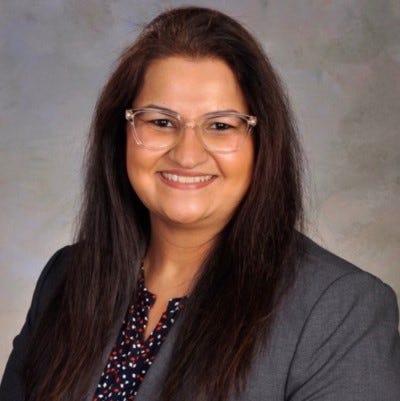The prolific health system is now able to offer telemedicine appointments to patients for primary care, urgent care and more than 70 specialties.
More than 8% of total outpatient visits now are conducted virtually.
Healthcare IT News
Bill Siwick
April 19, 2022
Rural Pennsylvania is bigger than the states of New Jersey, Massachusetts, New Hampshire and Vermont combined. Some 75%, or 33,394 square miles, of Pennsylvania are considered rural. The geography is diverse, from rugged mountainous terrain to large stretches of farmland.
Rural Pennsylvania is bigger than the states of New Jersey, Massachusetts, New Hampshire and Vermont combined. Some 75%, or 33,394 square miles, of Pennsylvania are considered rural
High-profile health system Geisinger and its affiliated entities serve 45 predominantly rural counties throughout central and northeastern Pennsylvania, 31 of which are a part of Appalachia, a unique region of the Appalachian Mountains that cuts through the western part of the state.
THE PROBLEM
“Access to specialty care for many of our communities is scarce; these communities already are faced with primary care shortages, and for those who need to seek specialists and sub-specialists, long travels often are a costly and time-consuming reality,” said Tejal A. Raichura, director of the center for telehealth at Geisinger.
“Access to specialty care for many of our communities is scarce; these communities already are faced with primary care shortages, and for those who need to seek specialists and sub-specialists, long travels often are a costly and time-consuming reality,
“Surveys show that rural Pennsylvanians are not taking care of themselves as well as their urban counterparts,” she continued.
“Fewer rural residents than their urban counterparts get the recommended exercise. Rural residents have higher rates of obesity, with almost two-thirds at risk for chronic diseases based on their sedentary lifestyle.”
Rural residents are in poorer physical condition, have more health risks and are more likely to lack health insurance, she added.
The wage gap between urban and rural Pennsylvanians is getting wider. In fact, it has doubled in the last 30 years.
Improving the quality of healthcare while lowering costs and increasing access in rural Pennsylvania counties is challenging, she said.
Rural residents are in poorer physical condition, have more health risks and are more likely to lack health insurance …
“In 2018, Geisinger leadership committed to expanding our telehealth program and invested in a platform that could cover various elements of virtual care, including video visits to the home and our clinics, tele-stroke visits at our various inpatient units and emergency rooms, and video visits to non-Geisinger organizations, including other hospitals, skilled nursing facilities, correctional facilities, et cetera,” Raichura recalled.
PROPOSAL
The business plan requested support for an expanded telemedicine program, one that would connect distantly located expert physicians trained in several specialties — including neurology, stroke/intensive care, pediatrics, primary care, geriatrics, psychiatry, endocrinology, rheumatology, podiatry and several others — with rural and underserved communities, allowing residents to access specialty care where they live and work.
The business plan requested support for an expanded telemedicine program, one that would connect distantly located expert physicians trained in several specialties …with rural and underserved communities, allowing residents to access specialty care where they live and work.

“On average, we saw a 7–10% decrease in no-show rates in patients scheduled for a video visit, compared with a patient scheduled for an in-person visit.” — Tejal A. Raichura, Geisinger
This telehealth expansion would feature in-home care, when feasible, and broadband access to help ensure care is delivered in a timely and safe manner.
It also would provide patients with access to specialists at closer-to-home clinics and help alleviate some of the obstacles faced by rural patients, including a lack of public transportation (especially between counties), missed workdays, and long distances needed to travel to care sites.
This telehealth expansion would feature in-home care, when feasible, and broadband access to help ensure care is delivered in a timely and safe manner.
It also would provide patients with access to specialists at closer-to-home clinics
MARKETPLACE
There are many vendors of telemedicine technology and services on the health IT market today. Healthcare IT News published a special report highlighting many of these vendors with detailed descriptions of their products. To read the special report, click here.
MEETING THE CHALLENGE
Geisinger now is able to offer telehealth appointments to patients for primary care, urgent care and more than 70 specialties.
“More than 8% of total outpatient visits now are conducted virtually, and more than 2,000 providers and more than 500 nurses have been trained to use telemedicine,” Raichura reported.
“This service is integrated into our electronic health record for scheduling and billing purposes.”
More than 8% of total outpatient visits now are conducted virtually, and more than 2,000 providers and more than 500 nurses have been trained to use telemedicine
“This service is integrated into our electronic health record for scheduling and billing purposes.”
RESULTS
Geisinger providers conducted more than 9,500 patient encounters via telemedicine in the three years preceding March 16, 2020.
However, since the COVID-19 pandemic, the health system shifted its focus to telehealth, seeing a greater than 2,000% increase in virtual patient encounters.
Between March 16, 2020, and April 11, 2020, Geisinger completed 38,095 telehealth patient encounters through telephone or video visit.
Between March 16, 2020, and March 20, 2022, it completed more than 784,000 telehealth visits.
At its peak, the health system averaged more than 3,800 encounters per day, which shows enormous growth in a short period of time and the importance of securing additional devices through the FCC’s COVID-19 Telehealth Grant Program, Raichura noted.
“We also experienced some interesting results in no-show rates in our behavioral health patient population,” she said. “On average, we saw a 7–10% decrease in no-show rates in patients scheduled for a video visit, compared with a patient scheduled for an in-person visit.
This has helped us further define ways to identify the value of virtual care for our various patient populations beyond looking at only volumes.”
USING FCC AWARD FUNDS
Geisinger was awarded $978,935 by the FCC for tablet computers, remote monitoring equipment and telehealth platform licenses to maintain a high level of access to care by providing telehealth visits for primary care appointments and all 72 healthcare specialties within the medical center.
“Funding was used to continue treating Geisinger patients across Pennsylvania,” Raichura said.
“While elective procedures have been postponed during COVID surges, patients have been encouraged to stay at home and continue their routine care with their providers virtually, as clinically appropriate.
Geisinger was awarded $978,935 by the FCC for tablet computers, remote monitoring equipment and telehealth platform licenses to maintain a high level of access to care by providing telehealth visits for primary care appointments and all 72 healthcare specialties within the medical center.
“Within the hospitals, patients admitted to any of our facilities continue to have access to specialty experts, as needed, whether they have a COVID-19 diagnosis or not,” she continued.
“Additionally, Geisinger has partnered with several skilled nursing facilities in the region to ensure their needs are met while avoiding risk of exposure.”
Further, as the organization prepared for a surge of COVID-19 diagnoses, EMS providers and emergency department screening tents at each of the 10 Geisinger facilities were equipped with telehealth capabilities.
Lastly, several providers at Geisinger were asked to self-quarantine due to potential exposure to a COVID-19 positive patient. While these providers were asymptomatic, healthy and able to continue caring for their patients, they could not go into any of the facilities. Instead, providers continued caring for their patients via telemedicine, even when quarantined.
“
We also recognize that broadband availability in rural areas is a limitation to the adoption of telehealth,” Raichura concluded. “We hope to continue to partner with the FCC and broadband providers to expand access to high-speed internet and high-quality care.”
We also recognize that broadband availability in rural areas is a limitation to the adoption of telehealth
Originally published at https://www.healthcareitnews.com on April 19, 2022.











